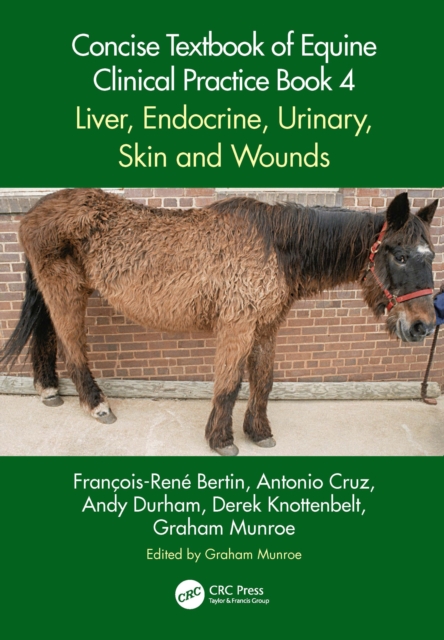
Concise Textbook of Equine Clinical Practice Book 4 : Liver, Endocrine, Urinary, Skin and Wounds PDF
by Francois-Rene Bertin, Antonio Cruz, Andy Durham, Derek Knottenbelt
Edited by Graham Munroe
Description
This concise, practical text covers the essential information veterinary students need to succeed in equine medicine and surgery, focussing on skin, urinary, liver and endocrine diseases. Written for an international readership, the book conveys the core information in an easily digestible, precise form with extensive use of bullet points, tables, flow charts, diagrams, lists, protocols and extensive illustrations.
Part of a five-book series that extracts and updates key information from Munroe's Equine Surgery, Reproduction and Medicine, Second Edition, the book distils best practice in a logical straightforward clinical-based approach. It details clinical anatomy, physical clinical examination techniques, diagnostic techniques and normal parameters, emphasising the things regularly available to general practitioners with minimal information of advanced techniques.
- The liver section is divided into clinical evaluation, diagnostic tests, possible causes and treatment
- The diagnostic approach to endocrine disease is followed by specific diseases of the thyroid, parathyroid, pituitary gland, equine metabolic syndrome and other miscellaneous disorders
- The approach to urinary tract problems includes information on diagnostic tests and imaging, renal diseases and diseases of the ureter, bladder and urethra
- The approach to skin disease is discussed in detail, including relevant diagnostic tests. Following this, individual skin diseases are covered under the headings of genetic, infectious, immune-mediated, nutritional, endocrine, idiopathic, traumatic and neoplastic causes
- Finally, skin wounds, burns and infections of synovial structures are discussed
Ideal for veterinary students and nurses on clinical placements with horses as well as practitioners needing a quick reference 'on the ground'.
Information
-
Download - Immediately Available
- Format:PDF
- Pages:196 pages
- Publisher:CRC Press
- Publication Date:07/02/2024
- Category:
- ISBN:9781000992274
Other Formats
- EPUB from £48.59
Information
-
Download - Immediately Available
- Format:PDF
- Pages:196 pages
- Publisher:CRC Press
- Publication Date:07/02/2024
- Category:
- ISBN:9781000992274






